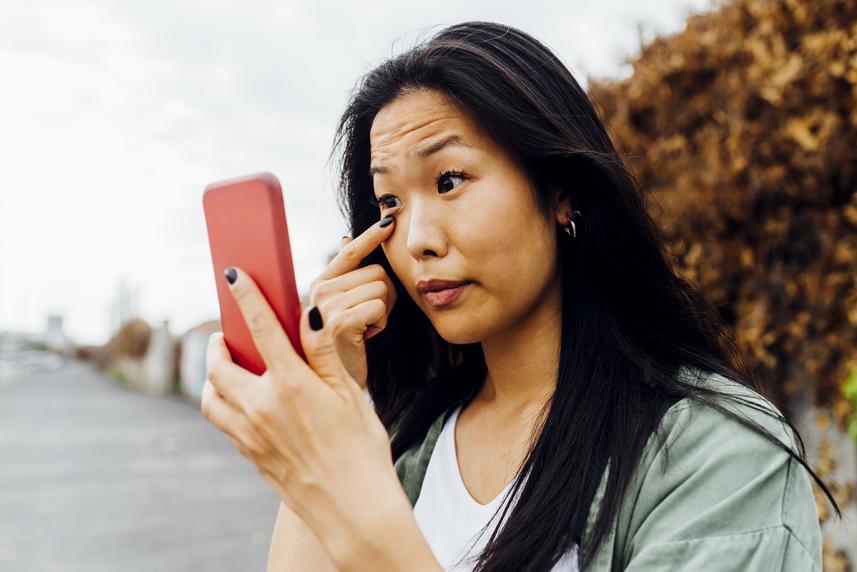
How to tell if you have pink eye

There is more to this eye condition than you might think. Read on to learn the root causes and how to find the best treatment.
You wake up one morning and your eyelids and lashes feel crusty. They’re also red and swollen. What’s going on? You might have pink eye, an infection or inflammation of the eye.
In doctor-speak, pink eye is known as conjunctivitis. And this condition can be highly contagious. We asked doctors to explain the causes, symptoms and treatments of pink eye. Plus, we’ve got tips on how you can get some relief.
What exactly is pink eye?
The conjunctiva is a mucus membrane that covers the white part of your eyeball and lines the eyelid. When it gets inflamed, it can take on a pink or red color. That’s why people often call conjunctivitis pink eye, says the Centers for Disease Control and Prevention (CDC).
The 2 most common causes of this condition are bacteria and viruses. “The symptoms of conjunctivitis may vary slightly, depending on the type you have,” says Steven Hass, OD. He’s an optometrist at the Hass Vision Center in Owosso, Michigan.
Common signs include:
- Pain and swelling in and around the eye
- Red or pink color in the whites of the eyes
- Crusting of lids and lashes
- Itching or burning
- Discharge
The Optum Store carries a variety of eye care products to fit your needs.
Forms of pink eye
“Inflammation to the conjunctiva is caused by many different things,” says Mark Deaver, MD. He’s an emergency medicine physician at Palomar Health in San Diego. There are 4 main types of pink eye, says Dr. Deaver.
Bacterial. Bacterial pink eye causes a thick discharge. It’s highly contagious and can be spread through physical contact. It sometimes crops up when you have a cold or respiratory infection. Bacterial pink eye can also be spread by sharing products such as:
- Mascara
- Eyeliner
- Skin care products
- Towels
- Pillows
- Eyedrops
Wearing dirty contact lenses can also cause a bacterial infection, according to the Mayo Clinic.
You'll need to see your doctor to get a prescription for antibiotic eye drops or ointment. Be sure to wash your hands after you apply eye drops or ointment. And wash up any time you touch your eyes.
Viral. This type of pink eye is highly contagious and is spread by direct contact. It’s typically seen in younger children at daycare centers and schools, says Dr. Deaver. Viral conjunctivitis is the most common form of infectious pink eye. It can spread from coughs and sneezes, too. So be careful if you’ve got a case of pink eye along with the flu or a respiratory infection.
Some viral infections are more serious and require aggressive treatment. For example, a virus such as herpes zoster (chickenpox and shingles) can cause pink eye, too. This form of conjunctivitis is treated with antiviral medications.
But in most cases, viral cases will get better on their own. You can find relief with artificial tears and cold compresses, according to the CDC.
Allergic. Allergic pink eye is usually caused by a reaction to an allergy trigger such as pollen or dust mites. “Seasonal allergies are the most common cause of conjunctivitis, and it is especially common in the spring and summer months,” says Dr. Hass. Pet dander can also cause an allergic reaction.
One surefire sign of allergic pink eye: Your eyes will water intensely. You may also have other classic allergy symptoms, such as a runny nose and sneezing.
You can try treating allergic pink eye at home with allergy eye drops. Or your doctor may prescribe eyedrops with antihistamines or steroids, says the American Optometric Association.
(Feel like there’s something in your eye when there isn’t? You could have dry eye. Learn more about the condition here.)
Irritants in your eye. Have you ever opened your eyes in a swimming pool with a lot of chlorine? Your eyes were probably red and irritated for a few hours after you dried off. This is a form of chemical conjunctivitis.
Chemicals such as chlorine, air pollution, smoke or fumes can cause pink eye. So can substances that get in your eyes such as shampoo or sunscreen. And getting something stuck in your eye can also trigger pink eye.
If you think you have conjunctivitis, see your doctor or ophthalmologist.
No matter what type of pink eye you have, follow these tips:
- Avoid touching or rubbing your eyes
- Stop wearing contacts immediately
- Be patient. It can take a few days to as long as 2 weeks until the irritation is completely gone.

Additional sources
Pink eye basics: Centers for Disease Control and Prevention (2021). “Conjunctivitis: Pink Eye”
Allergy treatment: American Optometric Association (n.d.). “Conjunctivitis (pink eye)”
Contact lenses: Mayo Clinic (n.d.). “Pink eye (Conjunctivitis)”